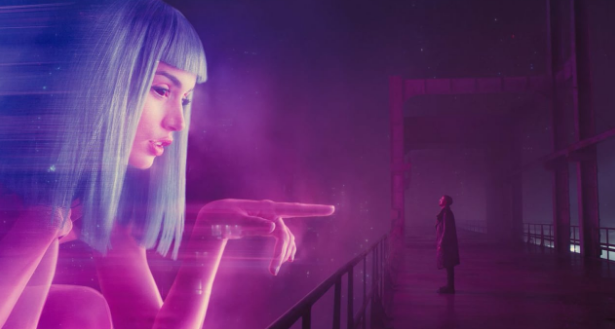Blade Runner 2049 Review
More stories from Dominic Smith
Image of Ryan Gosling and Anna De Armas in Blade Runner 2049
Blade Runner 2049 is not only one of the greatest movies to be released in 2017, but one of the greatest movies in the sci-fi genre. Not only does this movie pay respects to the 1982 original film Blade Runner, but it manages to carry an interesting and compelling story as a stand alone movie. The film is backed with amazing characters, fantastic performances, and beautiful production design. The film manages to insert you into the bleak and near future that has captivate audiences, ever since Ridley Scott captured the world in Blade Runner. Director Denis Villeneuve and writers Hampton Fancher and Michael Green manage to carry Ridley Scott’s original masterpiece to a new level, handling such a fragile film with care and consideration.
The original Blade Runner is considered one of the greatest films of all time. It showed the audiences of 1982 a different type of sci-fi than they were used to. The film change the grene from being a colorful space adventure, to a bleak realistic world with violence and corruption around every tightly packed city corner. Blade Runner 2049 continues with this theme of a darker world with dark Los Angeles sykes, constant rainy days, and the dark side of technology. The feel of the film itself makes you believe that this future could exist. The production design of both Blade Runner, and Blade Runner 2049 put the viewer into this future that is not a dystopia, but hardly a utopia. It shows the near future as what it could really be, as opposed to other films like Star Wars that show an idealised version of the future
Blade Runner 2049 produces three dimensional, complex, and emotional characters that you will come to love. Ryan Gosling brings the character to life with his performance as K, a replicant Blade Runner for the LAPD. His job alone changes the complexities that K must face on an everyday basis. For starters, he is a replicant, an android built as cheap labor and made to look and act as a normal human. However, his job as an LAPD officer and a Blade Runner makes him hunt down rogue replicants and “retire” them. This itself bring forth conflict in K’s mind as he is forced to hunt down his own kind. However, as this film is a sequel, the classic character of Rick Deckard returns along with Harrison Ford who managed to captivate audiences in the original Blade Runner. One of the most surprising performances in the film is by Cuban actress Ana de Armas who plays K’s holographic artificial girlfriend Joi. The character manages to show what is a computer program, built to be whatever the owner desires, as a real loving companion for K. The viewer will have trouble realising that his is indeed a computer, and not a real live woman.
However, there is one piece of the cast that I must say, does not live up to the original Blade Runner. That is the film’s villain, Niander Wallace played by Jared Leto. Don’t get me wrong, Leto’s performance as the blind genius and brilliant corporate giant is excellent. He manages to send shivers down the viewer’s spine with every raspy word. His constant blind gaze manages to be both captivating, and slightly disturbing. However, the original Blade Runner gave birth to one of the greatest villains ever created, Roy Batty. Roy, played by the brilliant Rutger Hauer in his breakout performance, was a replicant that went rogue, along with a few others, to try and extend their life past four years. What made Roy such a compelling villain is that he was not innately evil. Even though me might have been slightly insane, and did indeed kill people, the viewer still sympathized with him. He was a man trying to live his life past what was assigned. In contrast to Leto’s character, Wallace is seen as a man that is simply supposed to be the bad guy. Be however positive his motivations may seem, he is just the villain, and it is difficult to see where he is coming from. He simply wants to build slaves faster, but Roy wanted to live past his death sentence.
Blade Runner 2049 overall as a film is very strong. The film includes captivating characters, a production design that brings the world alive, and a thick overarching story. Frankly speaking, its few shortcomings of an unsympathetic villain, occasional slow pacing, and long run time are overshadowed by what makes the film so great. Not sine Mad Max Fury Road has a sequel to an older film gone so well. Ever since those two films the bar has been set for sequels that should be strong enough to stand on their own. Blade Runner 2049 as a film makes me hopeful for other planned sequels to come.
